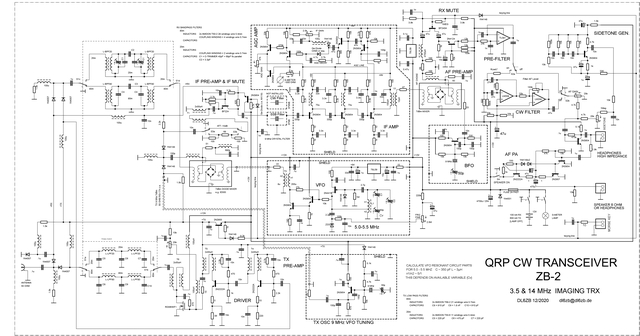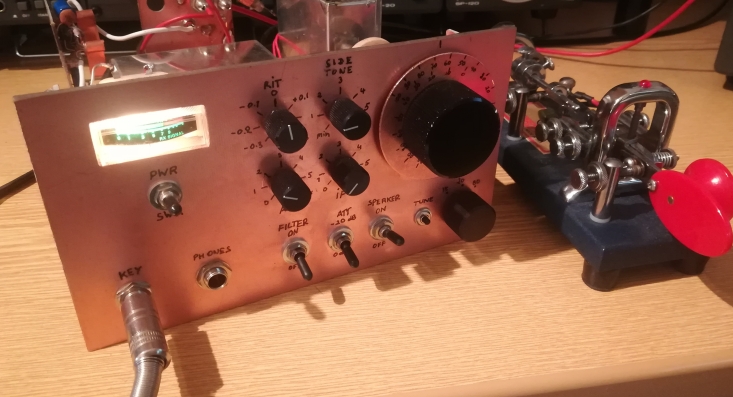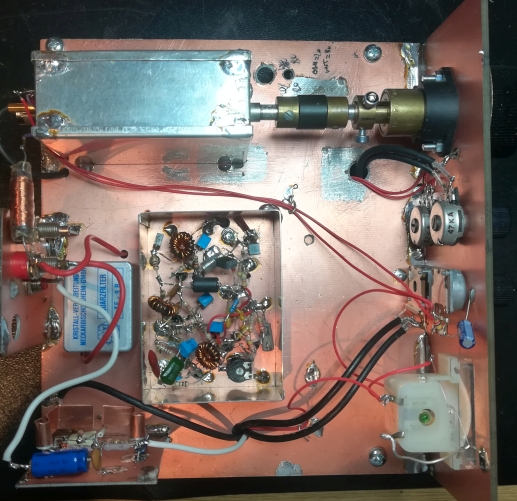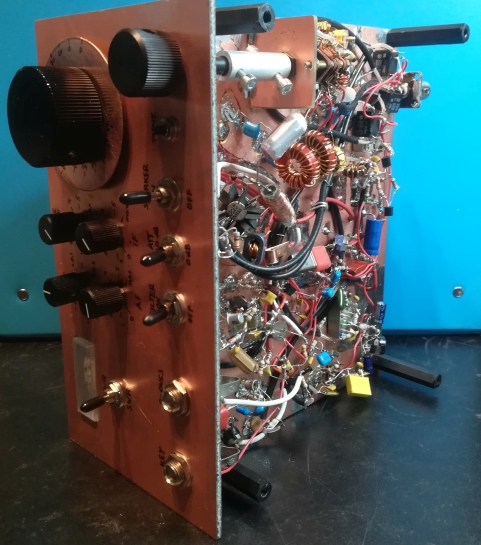Homemade Transceiver Project
20/80m CW QSK QRP Transceiver
October 2020, DL6ZB
This a 20/80m imaging CW QRP transceiver.
A transceiver technique "imaging" which was widely used by homebrewers
during the 60's and 70's usually has a 9 MHz IF. A
5.0 to 5.5 MHz VFO results in 3.5/14 MHz input/output at the same time.
The desired band has to be band filtered. The receiver's IF circuit design was inspired by VA3IUL.
The output power of the described transceiver is about 3 watts into a 50 ohm load.
Design goal was to make it simple with most parts from
the junk box and with as many BJTs and simple OPAs as possible.
Most of todays homemade projects uses micros and more or less
sophisticated frequency engines. No doubt, these projects are of great
value when it comes to learn more about modern RF technologies.
However, there still are a lot of homebrewers searching for more
traditional projects. If that's what you're looking than that's maybe something for you.
This project will be updated from time to time. It is built manhatten style to allow quick changes.

Click to download a PDF schematic
The receiver is a single conversion type with an IF
of 9 MHz. A junk box 2,7 kHz KVG XF9B SSB crystal filter was used here.
Any cheap CB radio SSB crystal filter or a ladder filter will do the
job. There are two commercial ring mixers used. I tried simple 1N4148
diode plus ferrite toroid (3x50uH) ring mixers successfully.
The main
problem with this single IF conversion is to keep away the 9 MHz BFO
emissions from the IF ampflifier. That's done by proper shielding.
That receiver has a 2,4 kHz bandwidth. I added a simple but suprisingly effective 300 Hz
bandwidth OpAmp AF filter. A better choice would certainly be a CW
crystal IF filter (e.g. XF9NB). However, I hadn't one in my junk box. The OP-AMP filter doing the job.
A small speaker or a high impedance headphone may be used. A low
impdance headphone would require either an additional AF stage or a
plug for connecting it to the loudspeaker output. I will add a low
impedance AF headphone amplifier stage later. Meanwhile the speaker
output can be used with low impedance headphones.
An early design had relay RX/TX switching. It was too noisy for me.
Therefore I changed it do a diode QSK switching circuit. The schematic
shows the new diode RX/TX switching design for QSK operation. I designed
the
transceiver still in "manhatten style" or "dead bug style". This allows
modifications at any time.
Front View.

Top view.
- VFO with a 1:36 planetary gear
- IF and AGC amplifier (open case)
- S-Meter
- Crystal Filter
- AF amplifier

Bottom view.
- Front Plate
- RF TX pre and power amplifiers
- AF pre-amplifier and AF filter
- 9 MHz RX&TX crystal oscillators
- Bandpass and TX low pass filters
- T/R switching

<<<back



